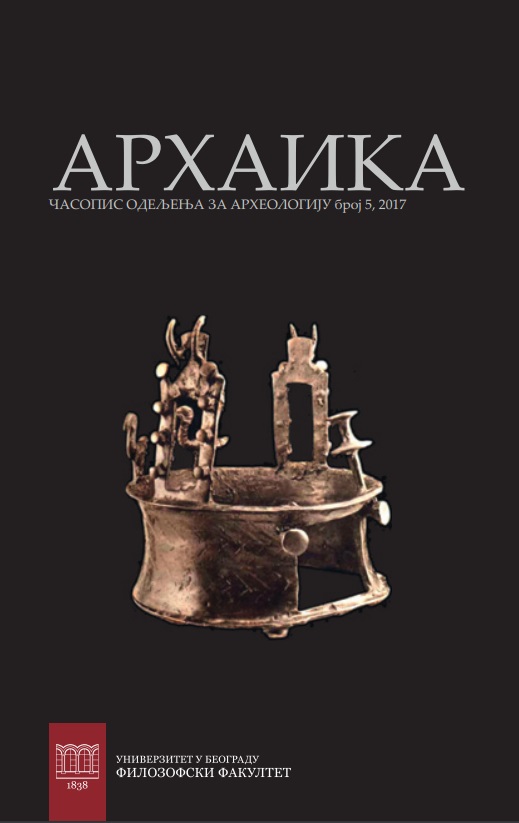Lov, stočarstvo i simbolički značaj životinja na Golokutu: nove analize arheozoološkog materijala
Hunting, Herding and the Significance of Animals at Golokut: New Analyses of Faunal Remains
Author(s): Ivana Živaljević, Vesna Dimitrijević, Darko Radmanović, Jelena Jovanović, Lidija Balj, Jugoslav Pendić, Bojana Ivošević, Sofija StefanovićSubject(s): Archaeology, Social history, Ancient World
Published by: Филозофски факултет, Универзитет у Београду
Keywords: Golokut-Vizić; Early Neolithic; faunal remains; hunting; stockbreeding; seasonality; symbolism
Summary/Abstract: The domestication of plants and animals, and subsequent the changes that they had triggered om human societies, plays a crucial role in archaeological narratives on processes of Neolithization. Given that Neolithic communities are generally perceived as “pastoral-agricultural”, hunting activities are usually interpreted as sporadic, occasional, seasonal, and even anomalous. In this paper, we argue that subsistence strategies and human-animal interaction were far more diverse, and (micro)regionally and culturally specific. The paper focuses on the site of Golokut-Vizić, which stands out in relation to other Starčevo sites by its specific location within the hilly and forest landscape of the Fruška Gora mountain, as well as by high frequency of wild animals within the faunal sample. By incorporating existing and new results of archaeozoological analyses (namely taxonomic composition and seasonality), stable isotope analyses and archaeological data on settlement patterns (architectural features and artifacts), we examine ecological, economic and social context of animal exploitation at Golokut, and problematise the hunting-stockbreeding dichotomy in the context of the Early Neolithic on the territory of Vojvodina and the Central Balkans.
Journal: Архаика
- Issue Year: 2017
- Issue No: 5
- Page Range: 1-26
- Page Count: 26
- Language: Serbian

